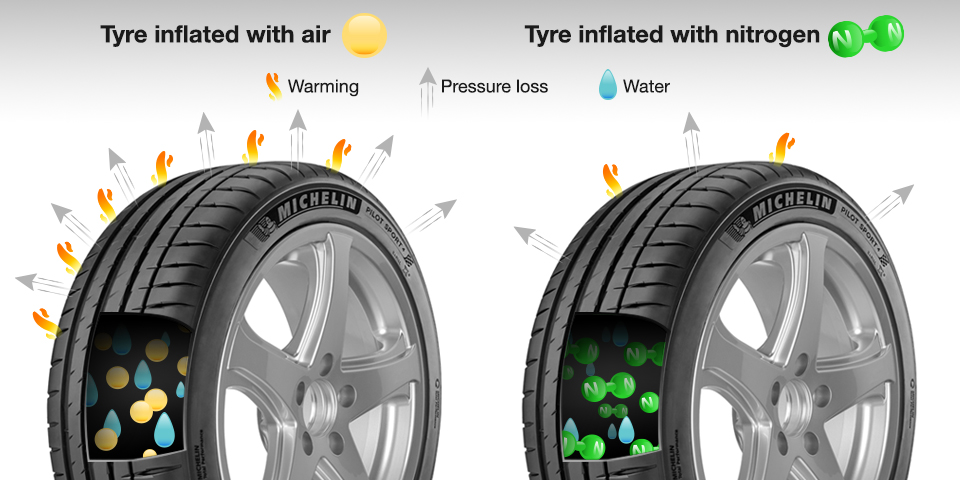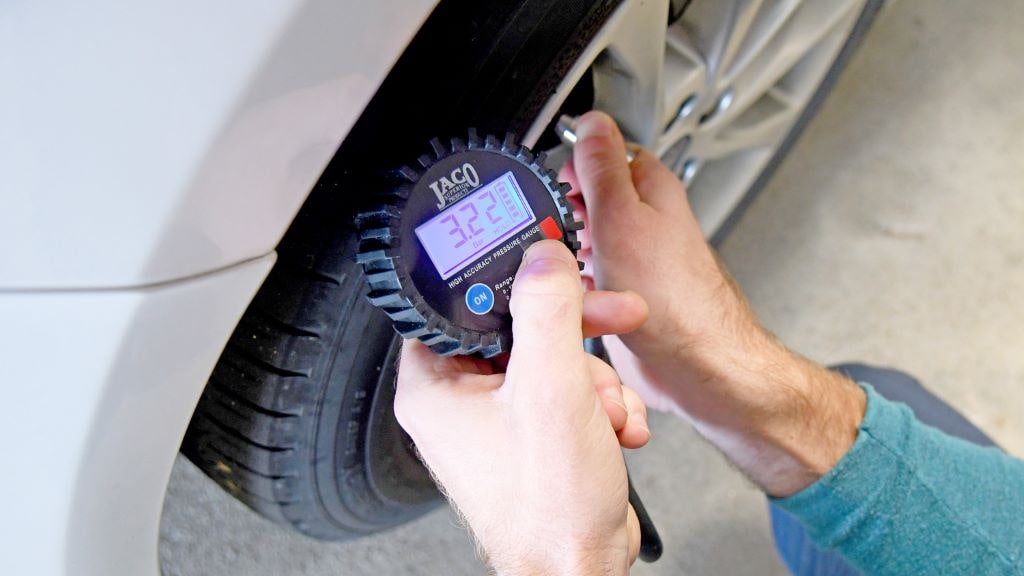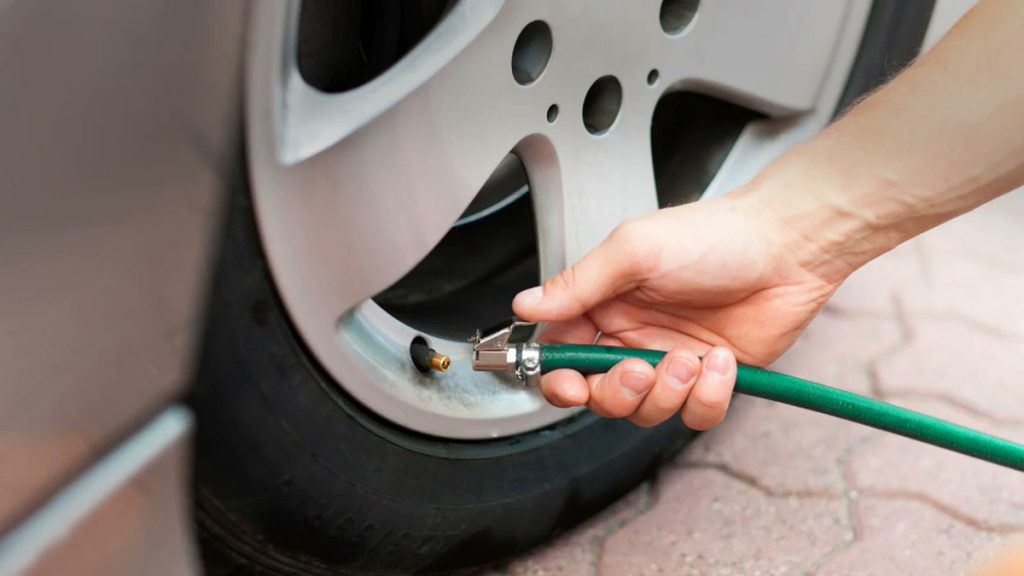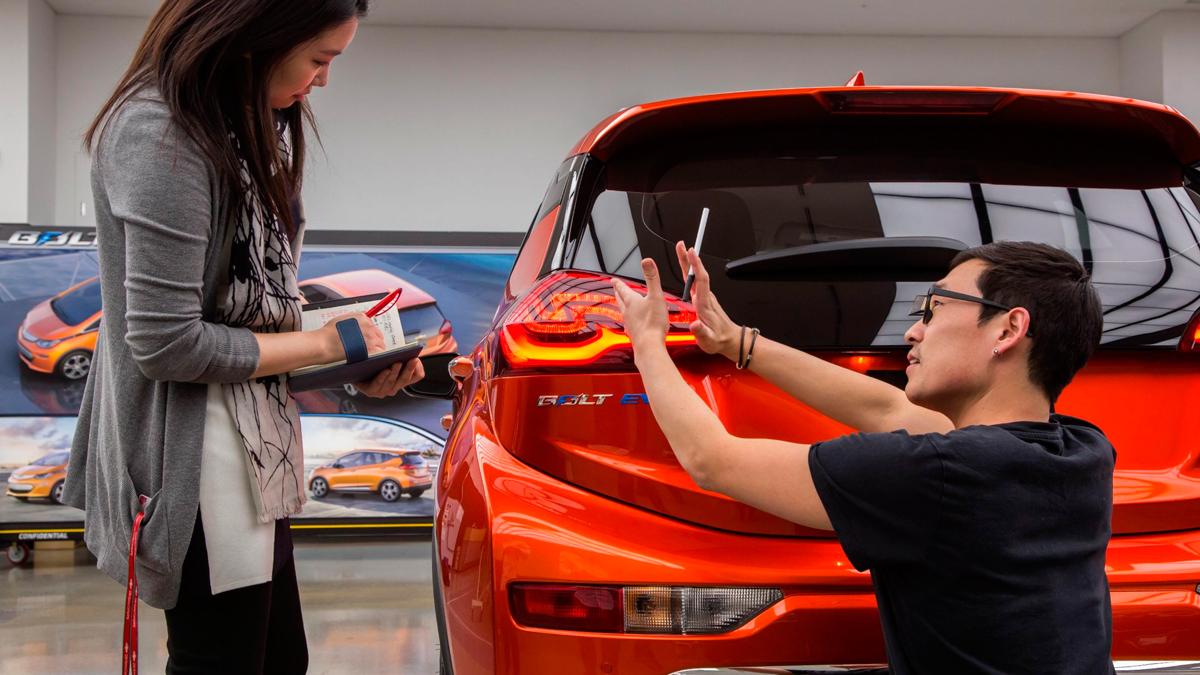How To Check Nitrogen Tire Pressure?
Spot something abnormal with your car tire but don’t know who to call in the middle of nowhere? This information on how to check nitrogen tire pressure may help you handle things in seconds.
People have talked and discussed a lot about this nitrogen tire before. As in theory, with nitrogen filling in, your tires will have a chance to experience a much slower process of losing pressure during their service life. Explained for this new tire-filling tendency, it is said that nitrogen in car tire will escape outside slower than the speed of air. Which may, at first heard, a part of drivers will likely rush to this type of tire to get themselves a real bargain in usage.
The larger the states, the more people find nitrogen tires throughout the years, hoping they can take advantage of car tires filled with this different-than-just-typical-air gas to have better overall car mileage and get a full-life pack of tires. One of the reasons why nitrogen filling is preferable nowadays is because humans are and will always be a fan of any time-saving services or items to help them in life to the utmost.
The tires are believed to keep them from worrying about checking tire pressure “too often” as before. Moreover, nitrogen also claims the spotlight for the un-rot status from the beginning by preventing water and moisture from entering the tire. And according to what some drivers assume, nitrogen tires may be the ones supporting them well in their everyday driving.
The Science of Putting Nitrogen In Car Tires
Let’s first get through the details of nitrogen activation in car tires to understand more about the reason behind its thriving in the industry.
Over time, the air inside car tires will inevitably vanish or leak out without any initial warnings. And often, this situation will especially happen when the tires are exposed to high-temperature sudden changes. These air-escaping circumstances root in the somewhat spongy or slightly porous tire walls. The basics are when a car tire becomes hotter, the air inside also extends.
Within the tires, the added pressures coming from the air expansion take place and push air outside via the pores. So to avoid dealing with any tire explosions in the summer due to gas bottling up without being released, you should occasionally have your tire air topped off, even if your tires do not have any existing holes.
People that have used nitrogen tires point out that they don’t lose tire pressure as quickly as air-filled tires. Because nitrogen molecules are larger than normal air molecules, they are more difficult to escape. This means that tires filled with nitrogen will maintain air pressure longer, so you may get better fuel economy and longer tire life by inflating your tires.
Typically, a car tire filled with air loses an average of 1-2 PSI (pounds per square inch) per month. There is truth to the fact that nitrogen-filled tires do tend to deflate air more slowly than other tires. However, the so-called improvement is modest, with a reduction of only about 1.3 PSI over the year. So overall, it is not enough to make a significant difference in gas mileage or tire natural wear.
As we can see, the air already contains 78% nitrogen and just under 21% oxygen. The rest of the air combination is a mix of water vapor, carbon dioxide, and other gasses. When nitrogen is pumped into tires, it increases the percentage of nitrogen to between 93 and 95 percent. But the filling amount of gas is and never will be a total of 100 percent.

It means that, instead of losing one or two PSI, you will lose 1/3 to 2/3 PSI per month. However, even with this mindset, you still need to check your tire pressure and top it off every month to stay within the ideal pressure range.
How To Check Nitrogen Tire Pressure
The easiest way is to check the tire pressure system on the car (if applicable). The method is usually applied through the digital console found on the main control panel. However, sometimes car owners also need some checking techniques that do not require meters or any other digital devices.
Visual inspection method
When drivers get into the habit of checking their tires, they will find that they have become so familiar with the vehicle that they can immediately tell when the tire pressure is incorrect. The best way to make sure is to park on a flat surface and walk, paying attention to the front and rear to see if any part of the tire protrudes more. Also, keep in mind that if the pickup or sport utility vehicle has a lot of passengers or cargo, the tires will reduce the weight. Therefore, always check the tire pressure in an idling car or the tire pressure after driving.
Manual method
Alternatively, another manual way to check car nitrogen tire pressure is using your bare hands. The method requires applying tire force and seeing how it reacts. The previous simultaneous tire hardness test should detect when the tire is inflated to the correct pressure to provide a reference for the inspection.
Check nitrogen tire pressure with gauge systems on the car
Step 1. Find the recommended nitrogen tire pressure for your vehicle
Check the manufacturer’s specifications for the recommended tire pressure of your vehicle. If you do not have the instruction manual, surf the internet and search for the info. The ideal pressure will be around 33 to 37 pounds per square inch.
Step 2. Take off the screws holding the valve cap in place and leave it on one side.
Rotate the valve cap counterclockwise until it disengages from the tire’s valve stem. Then you can easily remove this valve stem. Keep it safe and put it in a place you can access quickly.
Step 3. Connect the tire’s valve stem to the pressure gauge’s inflow valve.
The inflow valve is a small, metal protrusion on the end of the tire pressure gauge. It helps to regulate the pressure in the tire, so you can be sure that your tires are at the correct pressure. This spare tire cap fits snugly over the tire’s valve stem, ensuring a secure fit and preventing the tire from flattering or being too inflated.
By connecting the inflow valve to the valve stem, you will be able to hear a loud hiss as nitrogen escapes from the tire. Make sure the gauge and valve stem are connected correctly for this to work properly. This happens when the sound you have heard before is no longer there.
Step 4. Take down the inflation rate of the nitrogen tire on the pressure gauges at that moment.
The three most common tire pressure gauges are the digital pressure gauge, the dial pressure gauge, and the stick gauge. The different gauges are read in different ways. So here are the details of gauges you should keep an eye on:
The digital gauge
The digital gauge is the most accurate of the three types and is therefore the best option for measuring your vehicle’s nitrogen tire pressure. This device will connect to the valve stem of your tire and will provide you with a numeric display or digital read-out of your tire’s inflation rate. The digital gauges often include illuminated screens, which makes them easy to use even at nighttime. On the one hand, they are very reliable and can last for quite a good time. On the other hand, this kind of gauge needs batteries, which can inevitably and gradually wear out.

The stick gauge
This small, slender gauge is just like a pencil, which is perfect for creating accurate measurements. Inside the metal body is a stick made of plastic with marked gradients. When you attach the gauge to the valve stem of a car tire, air pressure will cause the plastic stick to poke out from the bottom of the gauge. You can then read the highest observable gradient on the stick surfaces to determine the tire pressure at that moment.
The dial gauge
Many people may prefer dial gauges because they are generally more sturdy and easier to read compared to the stick gauge. The dial and needle are protected by a clear cover of hard plastic or transparent glass. When you connect the valve’s stem to the inflow valve of the tire pressure gauge, the inflation needle moves until it is just above the inflation mark, marking the proper inflation rate of the tire.
Step 5. Disconnect the link between the tire’s valve stem and the gauge
Once you have gotten the precisely needed nitrogen tire pressure, disconnect the gauge by pulling it off the valve stem. The gauge and valve will disengage with a short hiss, indicating that the disconnection is safe and nothing wrong may happen.
Step 6. In case the tire pressure is under the recommendation rate, fill more nitrogen gas
After checking, if you notice the tire’s pressure is lower than recommended at about one psi, fill it instantly with more nitrogen. You can take your car to a mechanic or do it yourself with some guide below. To add gas to your tires at home, you will need a nitrogen tank, a digital tire inflator, and a mobile nitrogen analyzer. With the right tools and tips, you can turn the project into a great and easy-to-do one.
- Connect the digital tire inflator’s hose to the nitrogen tank’s outflow valve.
- Connect the inflator’s nozzle to the tire’s valve stem to inflate the tire. Please open the nitrogen tank’s outflow valve and allow nitrogen to flow into the tire.
- Watch the tire pressure readings of the inflator carefully to avoid overinflating the tires.
- When inflating your tire to the recommended psi, make sure to turn off the nitrogen tank.
- This will prevent any accidental overinflation and ensure a safe ride.
- Remove the inflator from the tire and the nitrogen tank.
- Connect your nitrogen analyzer to the valve stem of the tire to measure its air pressure.
- Readings should show nitrogen levels of 96% or higher.
- Remove the portable nitrogen analyzer from the tire valve stem.
Step 7. Change cap on tire’s valve stem
When you are done with the tire inflation, you can then replace the tire’s valve stem cap, and turn it counterclockwise until it is firmly locked into place.
Step 8. Repeat steps 2 to 7 with the other tires
Now that you have finished the process of how to check nitrogen tire pressure of your one tire, you can continue the process by continuing with the remaining three.
Pros And Cons Of Nitrogen Car Tires
Inflating nitrogen for tires should be considered depending on the intended use of the vehicle. Although there are many advantages, there are disadvantages that are worth considering.
Although normal air already contains 76% nitrogen, 21% oxygen, and 3% other gasses, pure nitrogen gas of about 92 – 98% still possesses many outstanding advantages and has long been widely used on racing cars, large trucks, and airplanes. Currently, when the report about Nitrogen gas is rampant, plus many shops providing this service, many drivers wonder whether they should completely replace their air tires with Nitrogen ones.
Advantages of nitrogen tires
Less leak
Air escapes the tire through the molecular structure of the rubber that is stretched as the wheel rolls. With typical air pumping, the oxygen in the tire causes the tire’s surface to oxidize, causing the rubber to decompose over time. Meanwhile, pure nitrogen will stable the tire pressure, pushing your car to perform more efficiently because the nitrogen molecule is larger than the oxygen molecule, making the leak process much slower. In addition, conventional air will lose 1.6 times faster than nitrogen.
According to the Journal of Chemical & Engineering, the pressure leak is reduced by 40% when injected with nitrogen. Pure nitrogen gas is inert, so it does not oxidize the inner surface of the tire. According to Consumer Reports research, for every 10 degrees Celsius increase or decrease, tire pressure will lose about one psi (0.07 kg/cm2). When inflating tires with nitrogen gas, tire pressure will be maintained stable within 2-3 months despite the impact of the outside temperature.
More fuel efficient
Higher tire pressure results in better fuel economy. Because nitrogen stays in the tires for a longer time, the driver will not have to work hard to pump the car often to keep the pressure, limit the frequency of under inflation and reduce rolling resistance when moving, making the vehicle more fuel efficient. According to the US Environmental Protection Agency (EPA), for every psi decrease in tire pressure, a car consumes 0.3% more gas.
Help control the car better
The nitrogen-inflated tires do not give the car too much handling ability. Even with daily driving, the driver will notice too much difference. However, nitrogen can help optimize tire pressure control and balance, evidenced by the fact that racing cars often use nitrogen tires or tires for aircraft, spacecraft, industrial machines, and many more.
Reduce wear and tear
Inflating tires with nitrogen gas will help reduce wear on wheel components. Because normal air will contain water vapor while nitrogen does not, and water vapor will increase the pressure in the tire at high temperatures. In addition, steam also rusts the inside of the wheel or valve and can corrode the sensors that monitor tire pressure.
Nitrogen-inflated tires are less susceptible to water vapor when the entire supply system is dry nitrogen. The process of pumping nitrogen gas is also more complicated when pumping gas and pushing air (including oxygen, water vapor, and other gasses) out effectively.
Disadvantages of nitrogen gas pump for tires
Inconvenient
Nitrogen gas is more expensive than regular air. And it is not available everywhere. At the same time, the driver needs to find a special place that supplies this gas. Sometimes it will be complicated to find a place to pump nitrogen when taking the car away and going on trips. That leads to the situation that, if unfortunately, the tire is punctured on the road, it is too difficult to find a place with a nitrogen pump right away.
Take more time to fill
Inflating nitrogen gas into the tire will be more complicated than usual. To maximize the benefits of nitrogen tires, drivers should inflate the tire and deflate it several times to filter out as much air as possible. Many places have pumps to filter oxygen from nitrogen and automatically perform the pump/discharge process if the driver comes to the pump for the first time.
Higher cost
According to Popular Mechanics, drivers in the US paid 30 USD for each nitrogen pump tire in 2009. And until now, nitrogen inflators are still more expensive than conventional pumps and require more staff to manage the task.

Drivers still have to pump nitrogen gas into car tires
Nitrogen tires do not guarantee year-round driving without having to check and re-adjust the pressure. Drivers can extend that time but still have to pump more nitrogen in the fall and winter when temperatures drop.
The Importance Of Checking Your Car Tires Pressure Regularly, Even If They Are Nitrogen or Oxygen
When subjected to daily wear and tear while driving, the tires will be greatly stretched. Since these are the direct contact points of the vehicle with the road, it is essential to take good care of them. Drivers should check tire pressure regularly, as it is one of the most vital parameters when taking care of tires. Riding on tires that are set to the incorrect pressure, or have lost pressure due to a leak, significantly affects the driving and engine performance. In particular, the risk of an accident or unexpected breakdown is always present.
How often should tire pressure be checked?
Checking tire pressure is a must regularly. At the very least, drivers should have monthly checks, although experts recommend checking every time you fill up with gas. The best time to check tire pressure is at home while the tires are still cold or possibly at the nearest gas station. This should be part of your daily car care routine.
If the car has a tire pressure monitoring system (TPMS), it will be easier for the driver to be alerted of a pressure loss. If the tire pressure check light on the dashboard comes on, it is a clear indication to perform a manual check for what the problem might be. There are other warning signs that car owners should also look out for, including:
- Rattling while driving can indicate that the tires are overinflated.
- Slow steering response or feeling difficulty controlling the vehicle.
- It takes longer than usual to come to a complete stop when braking
- Fuel economy is not as expected
Why is correct tire pressure that important?
Checking tire pressure is as little as saving a driver money on fuel bills at the end of the month. Or even avoiding severe consequences like damage to the rim from driving with a flat tire or losing control of over-inflated tires.
When the air pressure in the tire is too low, the tire walls lose stiffness and are therefore more prone to bending. The fast movement causes excessive friction, which increases the temperature of the rubber. The result is nothing more than light-speed tire wear and can lead to a tire blowout if the temperature is too high. In winter, cold weather or snow will mitigate this to some extent. But it should not be used as an excuse to drive with low tire pressure.
If car owners live where the temperature fluctuates, they should check the pressure more often, as this is one of the causes of pressure loss.
An overinflated tire is rarely a serious problem, but over a long period, the damage it causes can add up. This is because high-pressure tires have fewer spikes in contact with the road surface. As a result, the middle part of the tire wears out a lot faster than the rest. Such tires will need to be changed more often, and with less road contact, braking can be affected.
>> Check More: Driving with Low Tire Pressure: How Dangerous Is It?
Wrapping Up On How To Check Nitrogen Tire Pressure
In the end, it is paramount for driving safety and car performance to monitor and inspect tire pressure on time. Loss of traction, inability to brake, and poor handling are all possible side effects of improperly inflated tires, not to mention the increased risk of a tire blowout. Checking nitrogen tire pressure in due time will also prolong the tire life and ensure your safe ride.
After everything that we have gone through from the beginning about the nitrogen car tires, especially on how to check nitrogen tire pressure, we hope you will find some helpful insight to get yourself ready for any tire-checking due.
For more car maintenance tips, visit Car From Japan right today.














